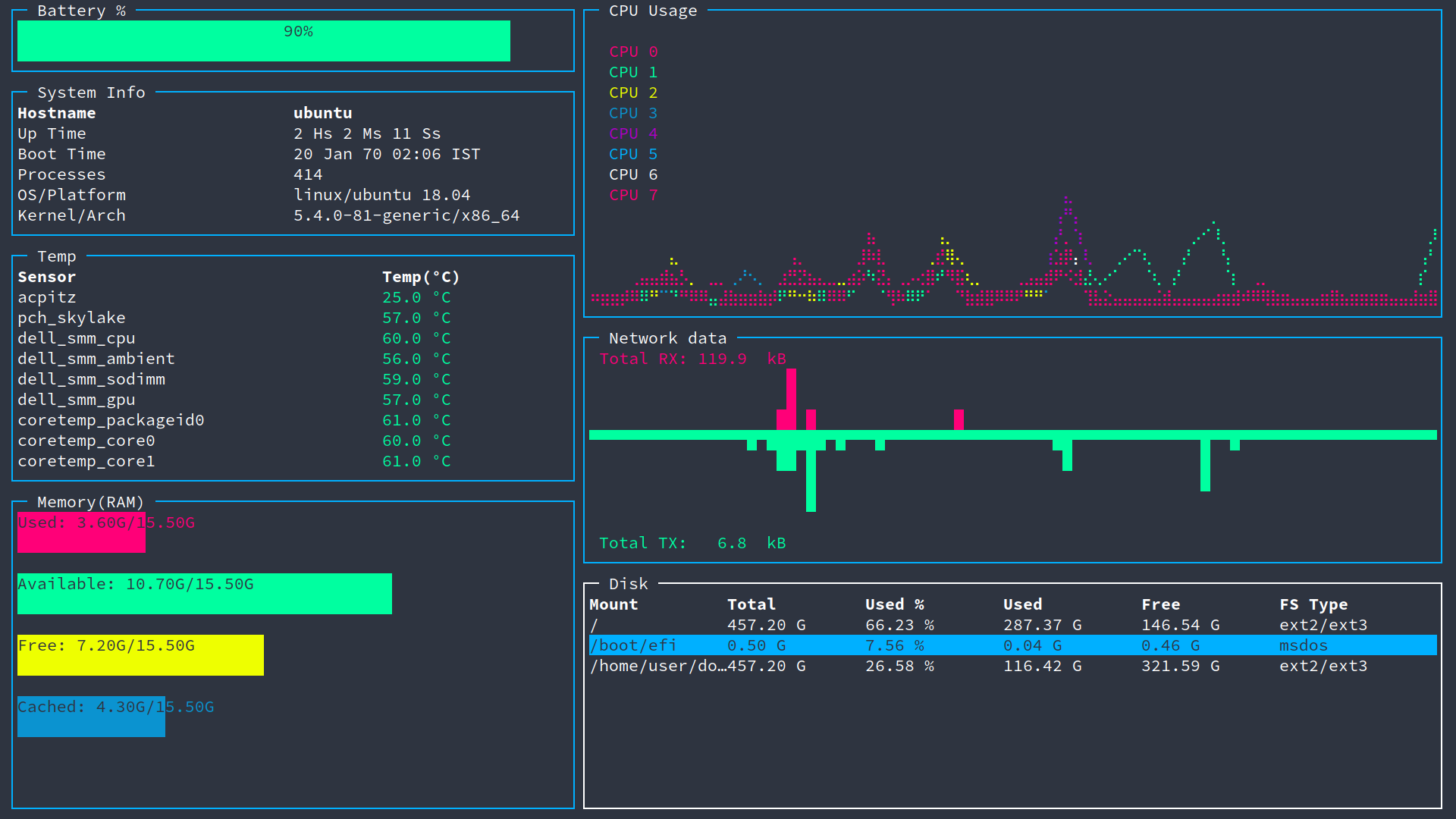Grofer is a system and resource monitoring tool that runs from your terminal.
It is written in Go.

If you want to jump right in to make contributions, have a look at the issues page on GitHub.
To those of you unfamiliar with Go and its concurrency model, we have provided a learning path for you to get you up to speed. Do note that you do not need to understand everything to start contributing – the issues labeled first-timers-only will help those of you get familiar with Git and the open source workflow without having to worry about understanding the codebase in detail.
Remember the #grofer-help channel is your friend, and we will address any question related to the project, Go in general, or even the contribution process.
Learning path for Grofer
The knowledge of the following will greatly aid you in contributing to grofer:
- The basic syntax, features and constructs of Go
- Recommended resource: Learn Go in Y Minutes
- Goroutines, channels and WaitGroups
- Recommended resource: A Tour of Go and Go by Example
- Basic understanding of the libraries used, such as gopsutil, termui and cobra/viper
- Asking questions at
#grofer-help- This is super effective at filling gaps in your understanding, and someone may help you by pointing to the right place to learn something as well
In general we recommend looking at the actual issues in the repo while you are learning, so you can see how the above ideas are put into practice.
Making your first contribution
You can contribute to Grofer by:
- Actually using grofer, and reporting any issues you face, or features you want on the GitHub repo.
- Seeing the issues currently present and coming up with a fix/contribution
- The README file will help you on building the application from source
- Refer to the contribution guidelines given in
CONTRIBUTING.md
- Just talking about it – spread the word about our community and what we are doing with your friends and on social media! More exposure helps us.